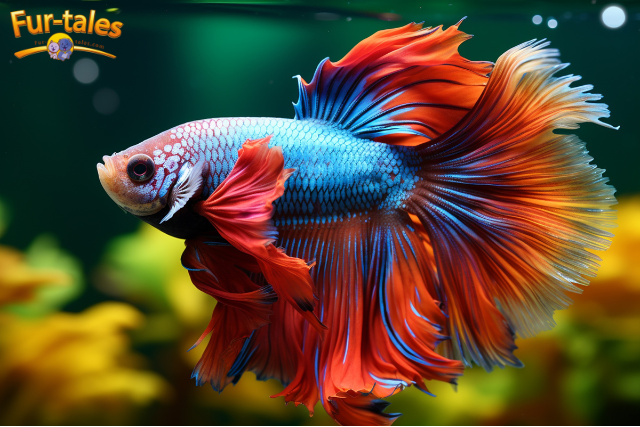
Beginner’s Guide: 7 Low-Maintenance Fish for New Owners
Starting an aquarium can be one of the most rewarding experiences for any pet lover. Watching colorful fish glide through the water brings a sense of peace and beauty to your home. However, if you’re just starting out, it’s essential to choose species that are easy to care for. Not all fish are beginner-friendly—some require complex tank setups, sensitive water conditions, or specific diets.
Luckily, there are several species that are both hardy and low-maintenance, making them perfect for first-time fish owners. In this article, we’ll introduce the top 7 low-maintenance fishes that will thrive in your aquarium with minimal effort, while still offering personality and vibrant colors.
Why Choose Low-Maintenance Fish?
Low-maintenance fish offer many benefits, especially for beginners:
- Easy care requirements
- Hardiness to common mistakes
- No need for elaborate tank setups
- Cost-effective and widely available
Choosing the right species will help you enjoy the hobby without frustration or unnecessary stress—both for you and your fish.
1. Betta Fish (Betta splendens)
Personality meets beauty.
Betta fish, also known as Siamese fighting fish, are one of the most popular choices for new aquarium owners. They come in dazzling colors and elegant fin shapes. Best of all, they’re easy to care for and can thrive in small tanks.
Care Highlights:
- Tank size: Minimum 5 gallons
- Temperature: 76–82°F
- Diet: Pellets, frozen or freeze-dried bloodworms
- Temperament: Solitary (males should be housed alone)
Betta fish do well without aerators or filters (though a gentle filter is still ideal) and can even breathe atmospheric air thanks to their labyrinth organ.
2. Guppies (Poecilia reticulata)
The little jewels of the tank.
Guppies are colorful, lively, and super easy to care for. They’re also prolific breeders, so if you have males and females together, expect babies!
Care Highlights:
- Tank size: Minimum 10 gallons
- Temperature: 72–82°F
- Diet: Flakes, brine shrimp, algae
- Temperament: Peaceful and social
These little swimmers add bursts of color and love to move in groups, making them perfect for community tanks.
3. Zebra Danios (Danio rerio)
Hardy and hyperactive.
Zebra Danios are small, striped fish that are practically bulletproof for beginners. They adapt well to various water conditions and are exceptionally resilient.
Care Highlights:
- Tank size: Minimum 10 gallons
- Temperature: 64–77°F
- Diet: Flakes, small pellets, micro-worms
- Temperament: Peaceful and active
These fish enjoy swimming in groups of 5 or more and add constant motion to your tank.
4. Corydoras Catfish (Corydoras spp.)
The gentle bottom dwellers.
Corydoras, or Cory cats, are small scavenger fish that help keep the tank clean by picking up leftover food. They’re non-aggressive, friendly, and love to be in small groups.
Care Highlights:
- Tank size: Minimum 10 gallons
- Temperature: 72–78°F
- Diet: Sinking pellets, algae wafers
- Temperament: Peaceful and shy
They also help stir up the substrate, preventing dead spots, which benefits your tank’s health.
5. Platies (Xiphophorus maculatus)
Colorful and carefree.
Platies are vibrant, easygoing fish that come in an array of colors. They’re peaceful and get along well with most other community fish.
Care Highlights:
- Tank size: Minimum 10 gallons
- Temperature: 70–78°F
- Diet: Flakes, vegetables, freeze-dried food
- Temperament: Friendly and active
They’re livebearers, so keep an eye out if males and females are together. Like guppies, they reproduce easily.
6. Mollies (Poecilia sphenops)
Versatile and vibrant.
Mollies are ideal for beginners thanks to their adaptability. They can live in freshwater or brackish water, and they tolerate a wide range of conditions.
Care Highlights:
- Tank size: Minimum 20 gallons
- Temperature: 72–78°F
- Diet: Algae, flakes, vegetables
- Temperament: Peaceful and sociable
They do best in groups and require a little more space than other beginner fish, but they make up for it in personality.
7. Neon Tetras (Paracheirodon innesi)
Tiny, glowing team players.
Neon tetras are small, glowing fish with striking blue and red coloring. While slightly more sensitive to water changes than others on this list, they’re still relatively easy for beginners who maintain stable conditions.
Care Highlights:
- Tank size: Minimum 10 gallons
- Temperature: 70–81°F
- Diet: Flakes, micro-pellets, brine shrimp
- Temperament: Peaceful and shy
They thrive in schools of at least six and love a planted tank with hiding spots.
Tips for a Successful Start
Start Small, But Not Too Small
A 10 to 20-gallon tank offers a good balance between manageability and stability. Smaller tanks are harder to maintain due to quick changes in water parameters.
Keep It Simple
Stick to hardy fish and avoid species with complex needs (like goldfish or exotic species) until you gain experience.
Test and Cycle
Always cycle your aquarium before adding fish. This ensures that beneficial bacteria have built up to handle waste.
Feed Sparingly
Overfeeding leads to dirty tanks and health problems. Feed only what your fish can eat in 2–3 minutes.
Regular Maintenance
Change 10–25% of your water weekly, check filter operation, and test water parameters to keep your tank healthy.
FAQs
Q: Can I mix these fish together in the same tank?
A: Yes, many of these species are peaceful and compatible. However, always research individual species’ needs before mixing.
Q: Do I need a heater for low-maintenance fish?
A: Most tropical fish need a heater. Check each species’ temperature range and use a heater if needed.
Q: How often should I clean the tank?
A: Perform partial water changes weekly and clean the substrate or decorations as needed. A good filtration system helps reduce the need for frequent deep cleaning.
Q: What’s the easiest fish to care for?
A: Betta fish and guppies are widely considered among the easiest due to their adaptability and low requirements.
Q: Can I keep fish in a bowl?
A: While fish bowls are marketed for pets, they are not ideal. They lack filtration and space, which can lead to stress and health issues. A tank is always better.
Image Designed Using Canva
